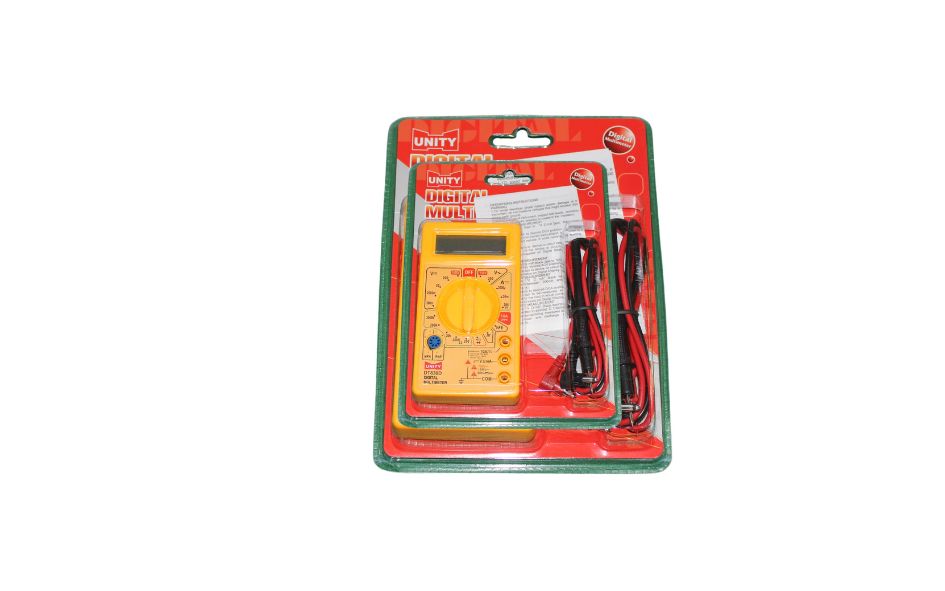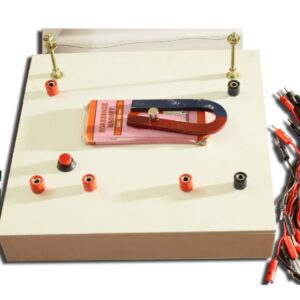CONDUCTORS AND INSULATORS WORKING MODEL
SCIENCE LAB EQUIPMENT WORKING MODEL / SCIENCE EXHIBITION WORKING MODEL
5 in stock
Refund
Unfortunately, once an order is placed, there is no refund available. However, we do offer exchanges for defective or damaged items.
Due to the nature of our products and the potential for misuse or mishandling, we do not offer refunds. We believe in customer satisfaction and strive to provide quality exchanges for any issues that may arise.
If you have received a defective or damaged item, please contact our customer service team and they will assist you with the exchange process. Please note that exchanges are subject to availability and product conditions.
We do not offer refunds for change of mind purchases, but we do offer exchanges for valid reasons such as defects or damages.
Delivery
My Science Kart delivers orders through a reliable and efficient shipping service to ensure your products arrive safely and on time.
Yes, you can easily track your order from My Science Kart by using the tracking number provided to you once your order has been shipped.
If you have any issues with your order from My Science Kart, please contact our customer service team who will be happy to assist you and resolve any problems.
Payment
You can pay for your purchases on My Science Kart using various payment methods such as credit/debit cards, net banking, UPI’s and mobile wallets.
Yes, we use industry-standard encryption technology to protect your payment information and ensure that it is secure.
If you have any payment-related queries or issues on My Science Kart, you can contact our customer support team through the website or email us at support@mysciencekart.com.
CONDUCTORS AND INSULATORS
Conductors and insulators are two categories of materials that behave differently when it comes to the flow of electrical current. Here’s a breakdown of each:
**Conductors:**
Conductors are materials that allow electrical current to flow through them easily. They have a high density of free electrons that can move freely within the material when a voltage is applied. Common examples of conductors include:
1. Metals such as copper, aluminum, silver, and gold.
2. Graphite (a form of carbon).
3. Some electrolytes (liquids that conduct electricity, like saltwater or ionized solutions).
**Characteristics of Conductors:**
1. Low electrical resistance: Conductors offer little resistance to the flow of electric current.
2. High thermal conductivity: Conductors also tend to have high thermal conductivity, meaning they can easily transfer heat.
3. Can be shaped easily: Many conductors, particularly metals, can be easily shaped or molded into wires or other forms.
**Insulators:**
Insulators, on the other hand, are materials that resist the flow of electrical current. They have tightly bound electrons that do not move freely, making it difficult for electricity to flow through them. Common examples of insulators include:
1. Rubber.
2. Plastic.
3. Glass.
4. Ceramic.
5. Air (under normal conditions).
**Characteristics of Insulators:**
1. High electrical resistance: Insulators have high resistance to the flow of electric current.
2. Low thermal conductivity: Insulators do not conduct heat well.
3. Often used for insulation: Insulators are commonly used to coat or surround conductors to prevent electrical leakage and protect against electric shock.
**Uses:**
– Conductors are used in electrical wiring, circuitry, and electronic devices to carry electric current.
– Insulators are used to coat or insulate conductors to prevent electrical leakage, ensure safety, and maintain the integrity of electrical circuits.
Understanding the properties of conductors and insulators is essential in various fields, including electrical engineering, materials science, and everyday applications such as electrical wiring and electronics.
Conductors
What Are Conductors?
Conductors are materials that allow the flow of electrical current in one or more directions. This is because they contain electric charges (usually electrons) that are relatively free to move through the material.
Examples of Conductors:
- Metals such as copper, aluminum, gold, and silver
- Human body (due to ionic solutions in fluids)
- Graphite (a form of carbon)
- Sea water (because of its salt content)
How Do Conductors Work?
- Charge Carriers: In conductors, the outer electrons of the atoms are loosely bound and can easily move through the material when an electric potential difference (voltage) is applied.
- Application of Voltage: When a voltage is applied across a conductor, it creates an electric field within the conductor. This field exerts force on the free electrons, causing them to drift toward the positive end.
- Electric Current: The movement of electrons under the influence of an electric field constitutes an electric current. The ease with which these electrons move is a measure of the conductivity of the material.
Insulators
What Are Insulators?
Insulators are materials that resist the flow of electric current. They have very few free electrons; the electrons are tightly bound to their atoms and do not move freely.
Examples of Insulators:
- Rubber
- Glass
- Most plastics
- Dry wood
- Dry air
How Do Insulators Work?
- Electron Mobility: In insulators, electrons are tightly bound to the atoms and cannot move freely. When an electric field is applied, the electrons do not have enough energy to break free from their atoms and thus do not contribute to electrical conduction.
- Resistance to Electric Current: Since the electrons do not move freely, there is very little to no current that flows through an insulator when a voltage is applied. This high resistance to electron flow makes insulators effective at preventing the passage of electricity.
- Use in Safety and Design: Insulators are used to protect us from unwanted electric currents. They are used to coat or encase conductive materials wherever electrical insulation is necessary, such as in electrical wiring and connectors.
Practical Applications
- Conductors are used wherever electricity needs to be transported from one place to another efficiently. This includes power cables, electronic circuits, and various types of electrical equipment.
- Insulators are used to prevent the accidental flow of electricity, ensuring safety in electrical systems. They are used in power cables (as the coating around the conductive wires), in circuit boards (as the base material that holds the conductive tracks apart), and in the housings of electrical devices.
Understanding the properties and functions of conductors and insulators allows engineers and designers to create safe and efficient electrical systems tailored to specific needs and environments. Whether it’s transferring power across continents or designing the circuitry inside a smartphone, the appropriate use of these materials is crucial.
| Weight | 0.5 kg |
|---|---|
| Dimensions | 25 × 25 × 5 cm |
You must be logged in to post a review.
Q & A
Related Products
TEMPERATURE AND RESISTANCE WORKING MODEL
- ✓ 100% Quality products
TOTAL INTERNAL REFLECTION WORKING MODEL
- ✓ 100% Quality products
REFRACTIVE INDEX OF THE PRISAM WORKING MODEL
- ✓ 100% Quality products
LIGHT RAY TRAVELS FROM A DENSER MEDIUM TO RARER MEDIUM WORKING MODEL
- ✓ 100% Quality products
RIGHT HAND RULE - 1 WORKING MODEL
- ✓ 100% Quality products
MAGNETIC FIELD DUE TO SOLENOID WORKING MODEL
- ✓ 100% Quality products
OERSTED EXPERIMENT WORKING MODEL
- ✓ 100% Quality products
ELECTRIC SHOCK WORKING MODEL
- ✓ 100% Quality products
Product categories
- Circuits & Projects 233
- My Science Kart 665
- Raw Materials For Projects & Lab Equipments 381
- Science Exhibition 516
- Science Exhibition Projects & Working Models 344
- Biology Science Exhibition Projects & Working Models 31
- Chemistry Science Exhibition Projects & Working Models 12
- Mathematics Science Exhibition projects & Working Models 7
- Physics Science Exhibition Projects & Working Models 129
- Robotics Science Exhibition Projects & Working Models 23
- Social Science Exhibition Projects & Working Models 20
- Science Lab Equipments With Working Models 363
Cart
TRULY INDIAN EDUCATION BRAND
Over 10,000+ Happy Customers
My Science Kart
Address:- Ground floor, Lakshmi Nagar, D.No:- 40-1/1-5, PVP Mall Backside, Mogalrajapuram, Labbipet, Vijayawada, Andhra Pradesh 520010
7673977997, 0866-3543677
mysciencekart@gmail.com
Categories
MAP
© My Science Kart 2024, Designed & Developed By Synfocy Tech Solutions

























Reviews
There are no reviews yet